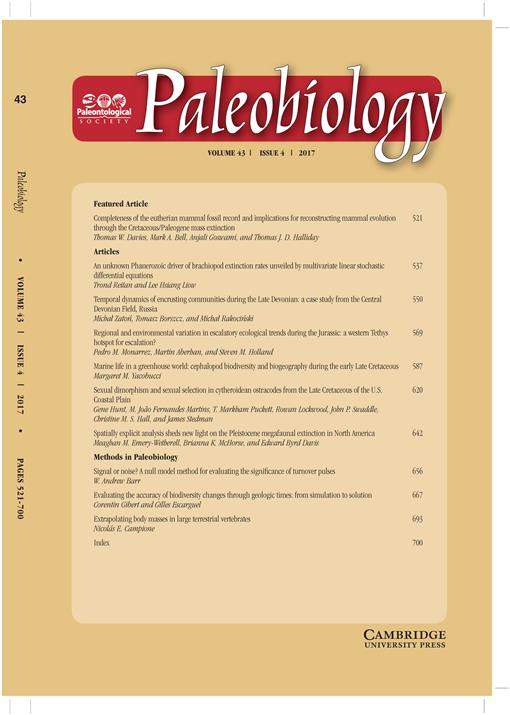Two end-member models are proposed to explain marine biotic responses to greenhouse conditions. Global warming and increasing sea level may: (1) promote dispersal of marine species, leading to larger geographic ranges and decreased speciation and biodiversity; or (2) result in formation of isolated epicontinental basins that host endemic radiations, leading to smaller geographic ranges and increased speciation and biodiversity. The Cenomanian—Turonian (C-T) interval, marked by greenhouse warming, sea-level rise, ocean anoxia, and biotic turnover, presents an opportunity to test these two end-member models. In particular, how cephalopods responded to these global changes has not been clear. A global database of 7262 cephalopod occurrences was used to evaluate biodiversity changes through the C-T interval. Both species- and genus-level diversity peaked in the late Cenomanian. The global diversity drop across the C/T boundary was modest; rather, diversity was low during the middle Cenomanian and middle Turonian, times of brief cooling. Regional variations in diversity responses may reflect the degree and timing of environmental perturbations within different oceanographic settings. Surprisingly, cephalopod faunas in the European Platform, Western Interior, and South Atlantic all shifted equatorward across the C/T boundary, whereas other regions saw no change in latitudinal distributions. Global generic geographic ranges did not change through the C-T interval, but the percentage of cosmopolitan genera did increase significantly across the C/T, both globally and within the Western Interior and Europe, whereas cosmopolitans dropped in the Pacific and South Atlantic. Neither end-member model for biodiversity change in a greenhouse world is supported for C-T cephalopods, as diversity increased without an associated increase in geographic range. It may be that sea-level rise and global warming led to both endemic radiations in epicontinental basins and an increase in cosmopolitan taxa in some regions, demonstrating the importance of combining global and regional-scale analyses.
How to translate text using browser tools
20 June 2017
Marine life in a greenhouse world: cephalopod biodiversity and biogeography during the early Late Cretaceous
Margaret M. Yacobucci
ACCESS THE FULL ARTICLE





